Themed collection Dalton Discussion 14: Advancing the chemistry of the f-elements

Dalton Discussion 14 – Advancing the chemistry of the f-elements, 28–30 July 2014, Edinburgh
Welcome to this Dalton Transactions themed issue including papers from Dalton Discussion 14 – Advancing the chemistry of the f-elements.

Dalton Trans., 2015,44, 2515-2516
https://doi.org/10.1039/C4DT90197E
Actinide-based single-molecule magnets
Actinide single-molecule magnets compose a small yet complex consortium, presenting new design and characterization challenges for magnetochemists and physicists.
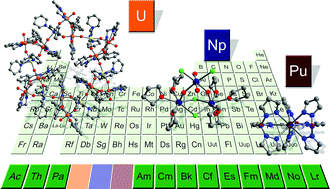
Dalton Trans., 2015,44, 2517-2528
https://doi.org/10.1039/C4DT02391A
Influence of riboflavin on the reduction of radionuclides by Shewanella oneidenis MR-1
Uranium (as UO22+), technetium (as TcO4−) and neptunium (as NpO2+) are highly mobile radionuclides that can be reduced enzymatically by a range of anaerobic and facultatively anaerobic microorganisms, including Shewanella oneidensis MR-1, to poorly soluble species. Riboflavin is secreted by this organism and can accelerate radionuclide bioreduction.
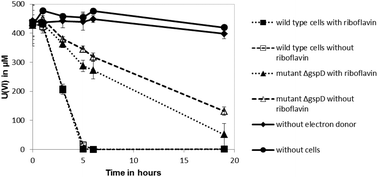
Dalton Trans., 2016,45, 5030-5037
https://doi.org/10.1039/C4DT02929A
Radical anionic versus neutral 2,2′-bipyridyl coordination in uranium complexes supported by amide and ketimide ligands
A series of 2,2′-bipyridyl uranium complexes shows that bipy is found as a radical anion or a neutral ligand such that uranium is in the +4 oxidation state.

Dalton Trans., 2015,44, 2676-2683
https://doi.org/10.1039/C4DT02422B
A self-assembling lanthanide molecular nanoparticle for optical imaging
The structure and photophysical properties of the nano-drum [Eu8Cd24L12(OAc)48] are described as well as imaging capabilities using commercial microscopy platforms.
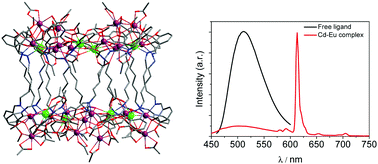
Dalton Trans., 2015,44, 2667-2675
https://doi.org/10.1039/C4DT02646B
The selectivity of diglycolamide (TODGA) and bis-triazine-bipyridine (BTBP) ligands in actinide/lanthanide complexation and solvent extraction separation – a theoretical approach
Charge transfer from the ligand to valence hybrid (mainly d) metal orbitals nearly equally stabilizes cationic EuIII and AmIII TODGA complexes.
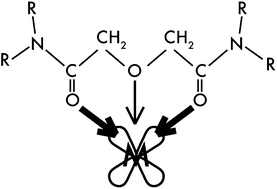
Dalton Trans., 2015,44, 2657-2666
https://doi.org/10.1039/C4DT02657H
Uranyl extraction by N,N-dialkylamide ligands studied using static and dynamic DFT simulations
DFT/MM-MD simulations highlight the structure and dynamics of mixed uranyl/nitrato/monoamides (L) complexes at an “oil”/water interface.
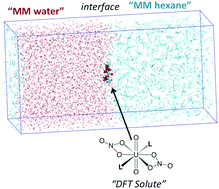
Dalton Trans., 2015,44, 2623-2638
https://doi.org/10.1039/C4DT02443E
Coordination polymers of uranium(IV) terephthalates
A series of tetravalent uranium terephthalates has been solvothermally synthesized in the solvent N,N-dimethylformamide (DMF) at temperature 100–150 °C with different water amounts.
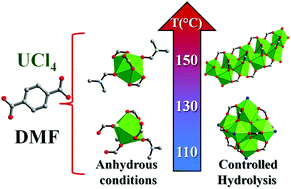
Dalton Trans., 2015,44, 2639-2649
https://doi.org/10.1039/C4DT02343A
Spectroscopic study on uranyl carboxylate complexes formed at the surface layer of Sulfolobus acidocaldarius
The complexation of U(VI) at the proteinaceous surface layer (S-layer) of the archaeal strain Sulfolobus acidocaldarius was investigated at the molecular scale using TRLFS and EXAFS spectroscopy.
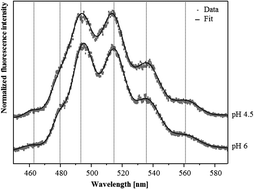
Dalton Trans., 2015,44, 2684-2692
https://doi.org/10.1039/C4DT02555E
CS2 activation at uranium(III) siloxide ate complexes: the effect of a Lewis acidic site
Multimetallic cooperativity plays an important role in U(III) mediated CS2 reduction: the reductive dimerization of CS2 occurs preferentially at a heterodimetallic U, K complex while the reductive disproportionation pathway is favoured by the “ate” complex [K(18c6)][U(OSi(OtBu)3)4].
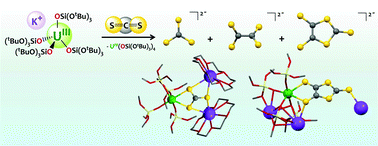
Dalton Trans., 2015,44, 2650-2656
https://doi.org/10.1039/C4DT02585G
Density functional theory investigation of the layered uranium oxides U3O8 and U2O5
New predictions of structural, electronic and mechanical properties of layered uranium oxides using DFT + U calculations.
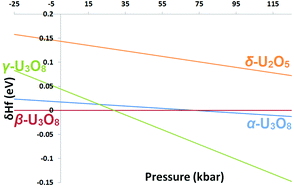
Dalton Trans., 2015,44, 2613-2622
https://doi.org/10.1039/C4DT02493A
Smaller than a nanoparticle with the design of discrete polynuclear molecular complexes displaying near-infrared to visible upconversion
An unprecedented molecular [ErN9] chromophore emits simultaneous dual green (542 nm) and near-infrared (1540 nm) light upon indirect excitation.
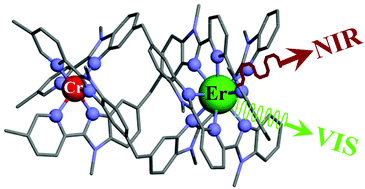
Dalton Trans., 2015,44, 2529-2540
https://doi.org/10.1039/C4DT02336F
Synchrotron applications to f-element research in the nuclear fuel cycle
A summary of innovative techniques using synchrotron radiation for actinide studies in nuclear research, including X-ray spectroscopy and imaging.

Dalton Trans., 2015,44, 2606-2612
https://doi.org/10.1039/C4DT02716G
Mixed sandwich thorium complexes incorporating bis(tri-isopropylsilyl)cyclooctatetraenyl and pentamethylcyclopentadienyl ligands: synthesis, structure and reactivity
The synthesis of thorium complexes of the type Th(COTTIPS2)Cp*X (X = Cl, I, CH2Ph, H) and their reactivity towards CO2, including reductive coupling to form an oxalate complex, are reported.
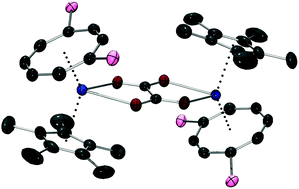
Dalton Trans., 2015,44, 2588-2596
https://doi.org/10.1039/C4DT02362E
Synthesis and characterisation of lanthanide-hydroporphyrin dyads
Hydroporphyrin-linked lanthanide complexes with variations in tetrapyrrole structure, linker length and mode of attachment are reported.
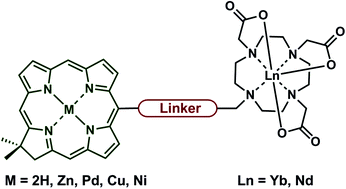
Dalton Trans., 2015,44, 2541-2553
https://doi.org/10.1039/C4DT02448F
Structural characterization of environmentally relevant ternary uranyl citrate complexes present in aqueous solutions and solid state materials
Structural characterization of U(VI) : (Al(III), Fe(III)) : citrate complexes provides insight into the formation of polynuclear clusters present in environmentally-relevant aqueous solutions.
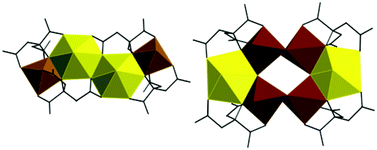
Dalton Trans., 2015,44, 2597-2605
https://doi.org/10.1039/C4DT02442G
Can a pentamethylcyclopentadienyl ligand act as a proton-relay in f-element chemistry? Insights from a joint experimental/theoretical study
Isomerisation of buta-1,2-diene to but-2-yne by (Me5C5)2Yb is a thermodynamically favourable reaction, with the ΔrG° estimated from experimental data at 298 K to be −3.0 kcal mol−1.
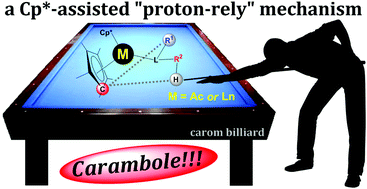
Dalton Trans., 2015,44, 2575-2587
https://doi.org/10.1039/C4DT02387K
Sonochemical redox reactions of Pu(III) and Pu(IV) in aqueous nitric solutions
The 20 kHz sonication of aqueous nitric solutions generates active species which can further react with Pu(IV) and Pu(III) ions.
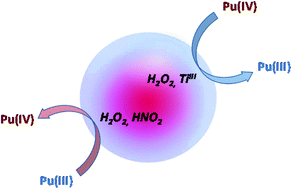
Dalton Trans., 2015,44, 2567-2574
https://doi.org/10.1039/C4DT02330G
The strength of actinide–element bonds from the quantum theory of atoms-in-molecules
Excellent correlation is found between standard QTAIM metrics and An–N bond lengths, and with N–N bond lengths and vibrational frequencies, but much poorer correlations exist with An–N and An–O interaction energies. Superior correlations are found between interaction energies and the change in the QTAIM charge on compound formation.
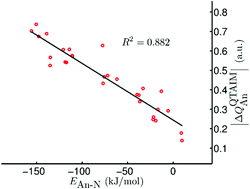
Dalton Trans., 2015,44, 2554-2566
https://doi.org/10.1039/C4DT02323D
Stabilization of MIV = Ti, Zr, Hf, Ce, and Th using a selenium bis(phenolate) ligand
We report M(IV) M = Ti, Zr, Hf, Ce, and Th, complexes of a selenium bis(phenolate) ligand, 2,2′-selenobis(4,6-di-tert-butylphenol), (H2ArOSeO).
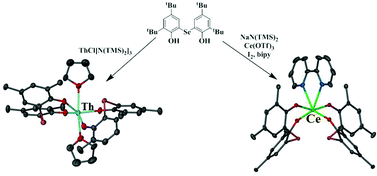
Dalton Trans., 2015,44, 2693-2702
https://doi.org/10.1039/C4DT01798F
About this collection
This themed issue aims to highlight the burgeoning role and exciting prospects for f-elements in modern, metal-based chemistry.
It is associated with the Dalton Discussion 14 meeting which was held in Edinburgh in July 2014 and is guest edited by Dr Jason Love (University of Edinburgh).